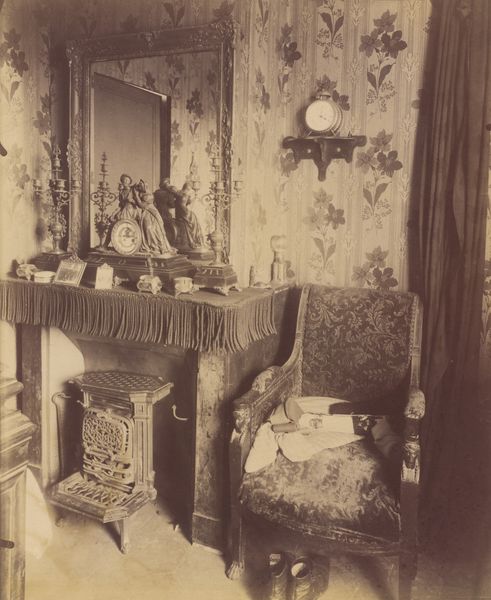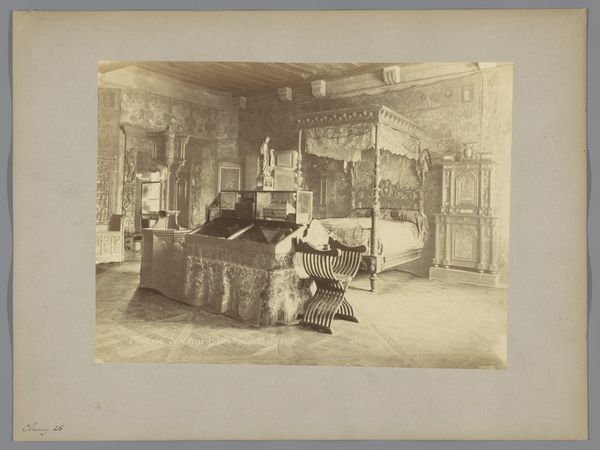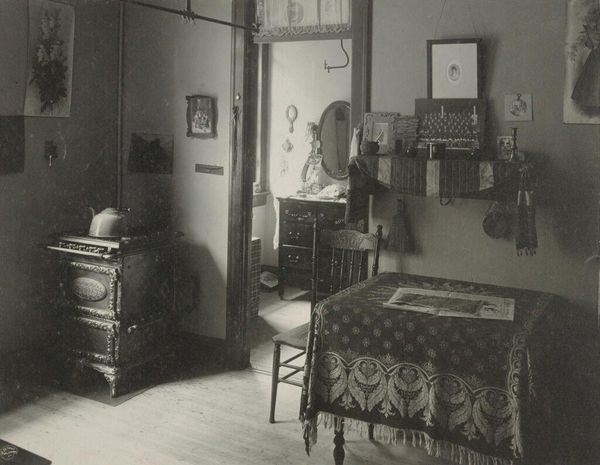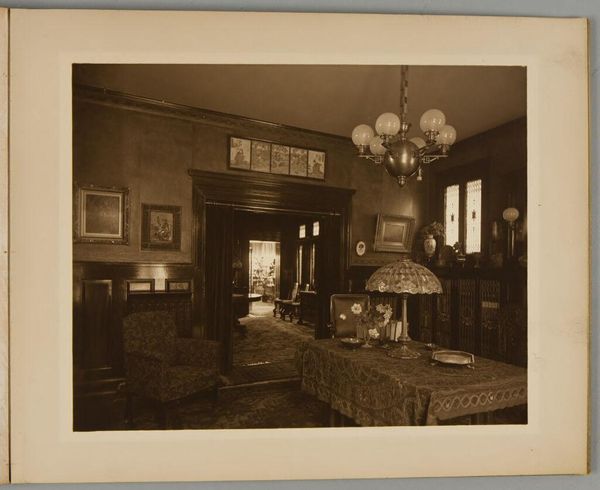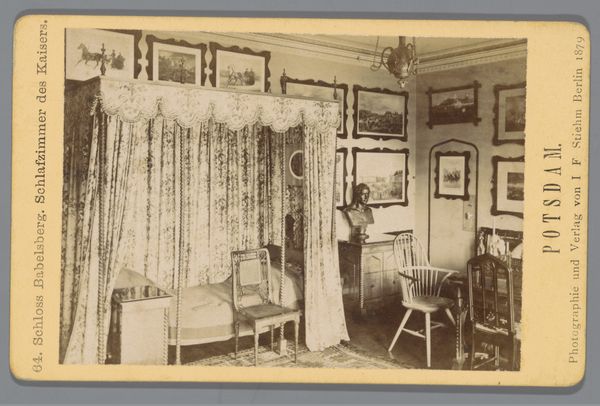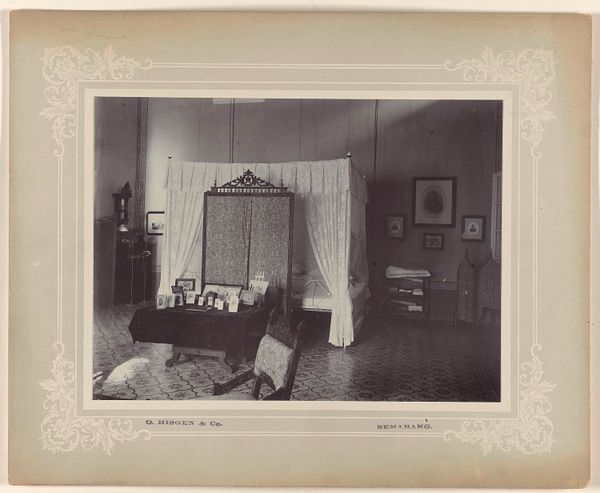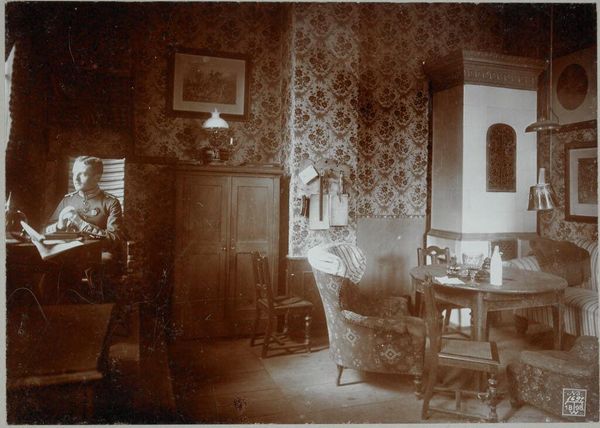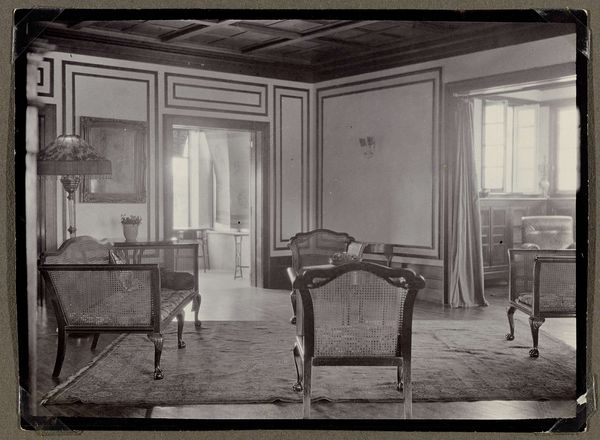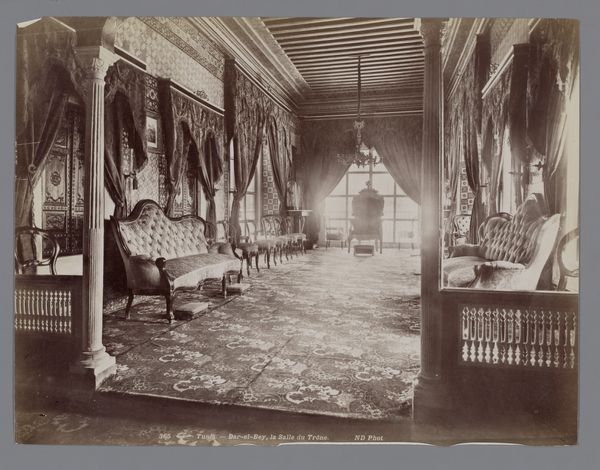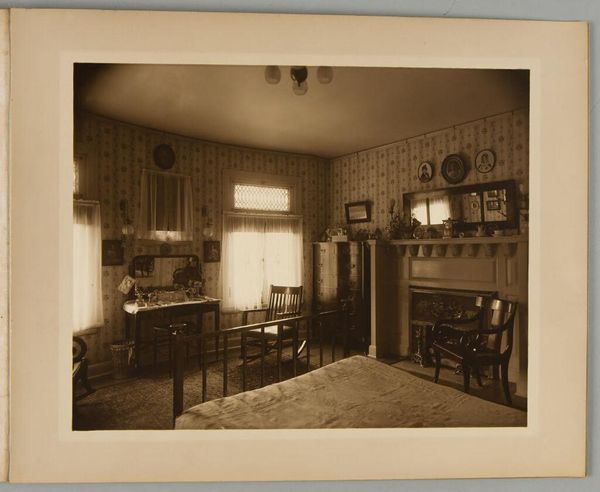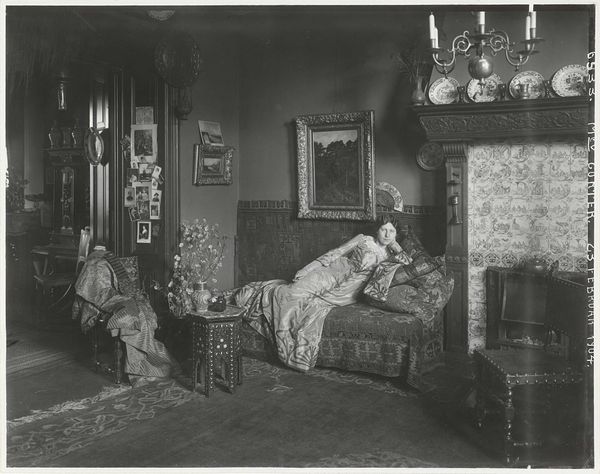
photography, glass, wood
#
portrait
#
interior architecture
#
unusual home photography
#
16_19th-century
#
pictorialism
#
arts-&-crafts-movement
#
photography
#
glass
#
wood
#
interior photography
Dimensions: 8.2 × 8.2 cm
Copyright: Public Domain
Curator: This photograph, "Kelmscott Manor: Bed Wm. Morris Was Born In," was taken in 1896 by Frederick H. Evans. It's a fascinating glimpse into the domestic life of the Arts and Crafts movement. Editor: My first thought is how the monochrome palette almost intensifies the textures—the way light interacts with fabric and wood speaks volumes about the physical world inhabited here. Curator: Exactly! Evans masterfully captures the nuances of light and shadow. Notice the composition, how the eye is drawn to the elaborate bed, the clear focal point within the complexity of patterned wallpaper and textiles. Editor: Absolutely, and thinking about production... Everything visible speaks to the labor involved. Hand-printed wallpapers, carefully woven rugs, even the turned wood posts of the bed frame - these aren’t just objects, they represent countless hours of skilled craftsmanship, each echoing Morris’s ethos. Curator: True. The composition also evokes a strong sense of interiority, literally, but also figuratively. The room becomes a space of personal reflection. How do the photograph's structural components support a larger theme related to history or time? Editor: To that point, photography was used in publications of country homes and furniture designs as an instruction to consumers; Kelmscott was photographed for mass consumption of a lifestyle and aesthetic, wasn't it? It makes one wonder how much "authenticity" is pictured here. Curator: That’s an astute point, complicating our understanding of Evans' artistic intent. And look at the details such as glass panes that capture outdoor light in the corner of the image and add a geometric flair, creating complex visual and spatial harmony. Editor: It's clear that a lot of "backstage" work was conducted in material assembly so that domestic life and decor was accessible for others to simulate. This, however, does speak to the legacy of labor! Curator: Reflecting on the image’s success, I’d say it is the ability to freeze a specific moment of time while conveying the endurance of a creative and philosophical vision that allows for viewers to glimpse into another’s worldview. Editor: And I'd suggest its true impact lies in documenting labor: what it is, how it looks, and for whom its products are consumed.
Comments
No comments
Be the first to comment and join the conversation on the ultimate creative platform.
